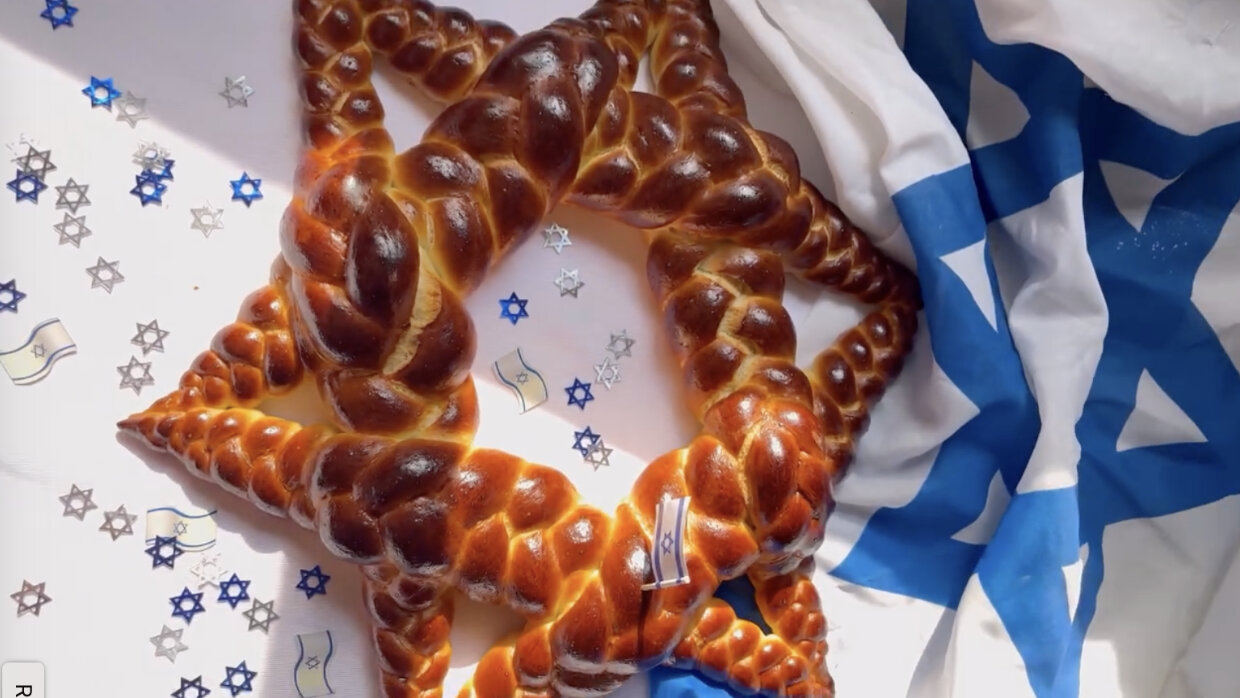Moufleta are the Moroccan flatbreads most commonly associated with the Mimouna celebration the night or day after Passover. It is a thin crepe like bread that can be served both savory or sweet. Most often you will see it with butter and honey.
Ingredients
Servings 40 pancakes
- 8 cups of flour
- 1-2 ¼-ounce packets instant yeast (The optional second packet makes the dough thicker)
- 1 tablespoon sugar
- 1 tablespoon salt
- 2 ½ cups warm water
- 2 cups canola oil
- Butter or margarine and honey for serving
- Jams for serving optional
Nutritional Facts
Nutrition Facts
Moufleta
Amount per Serving
Calories
191
% Daily Value*
Fat
11
g
17
%
Saturated Fat
1
g
6
%
Trans Fat
0.04
g
Polyunsaturated Fat
3
g
Monounsaturated Fat
7
g
Sodium
175
mg
8
%
Potassium
27
mg
1
%
Carbohydrates
19
g
6
%
Fiber
1
g
4
%
Sugar
0.4
g
0
%
Protein
3
g
6
%
Calcium
4
mg
0
%
Iron
1
mg
6
%
* Percent Daily Values are based on a 2000 calorie diet.
Instructions
- Mix flour, yeast, sugar, and salt in a large bowl, then gradually add water until the dough is smooth, dense, and slightly sticky. The dough should not stick to the bowl. Cover the bowl and set aside for 15 minutes to rest.
- It is possible to make this dough without yeast. As my father-in-law says, it is basically the same dough as matzah but given the chance to leaven. I think that the yeast makes the dough more workable, so I’d recommend using it for newbie moufleta makers.
- Divide the dough into about 40 balls. The size depends on your preference, but they should be between 2 - 2 ½ inches. The smoother your ball is, the easier it will be to flatten it into an even circle later, although it doesn’t need to be perfect. Then set the balls aside in a bowl and cover them with the canola oil. The balls need to be submerged in the oil so the dough stays moist. A wider bowl may require more than 2 cups of oil to cover everything. Then let the dough rest for another 15 minutes.
- Take one ball out of the oil bath and smooth it into a thin, almost transparent circle on your countertop. The texture should be similar to pastry dough. This process can be a little frustrating because the thin dough tends to rip easily.
- To make it easier one can place the dough in between two sheets of parchment paper, using either a rolling pin or hands to flatten it into a circle. If using hands it’s important to rub the dough in a circular motion with the palms and not the fingers. The benefit of using parchment paper is that it is easy to transfer the moufleta to the pan after one has rolled out the dough.
- Another option is to place the dough directly on the countertop, coating it with a teaspoon of oil, and covering it with a large piece of oiled-up plastic wrap. Then use hands to spread the ball into a thin circle under the plastic. This makes the shaping process quick and easy.
- Take a twelve-inch frying pan, I like using a crepe pan because it heats up quickly, lightly coat it with oil using a pastry brush or a paper towel, and heat it up to medium temperature. Then place your first moufleta into the pan.
- Immediately begin shaping the next moufleta. Turn the first moufleta over, it should’ve cooked until it has small brown spots on one side or approximately 30-60 seconds.
- Then place the second moufleta right on top of the first one. Unlike pancakes, moufletas are fried in stacks. The entire stack needs to be turned over to fry each subsequent moufleta. The time needed to cook a moufleta on one side should take the same amount of time needed to shape a new moufleta.
- Since the dough is thin, each circle doesn't have to be cooked on both sides but many will turn over the moufleta from the cooked to the "raw" side before flipping the stack. This slows down the cooking process and requires caution so the stack doesn't fall apart.
- There shouldn’t be more than ten moufletas stacked in a pile, otherwise, it will be difficult to flip it over. So once ten moufletas are done, they need to be moved to a plate and the process started over from the beginning.
- The stack is placed on the table, where guests will take a moufleta one at a time. They then top their moufleta with honey and margarine, or butter to taste. Some use jams.
- The cook should set some moufletas aside to eat while cooking the next batch, as they disappear quickly into the stomachs of family and friends. The cooking process may seem daunting at first, as it did to me when I first learned how to make moufletas. I hope that with enough patience and practice mimouna will become one of your favorite traditions as it became mine. Tirbechu utisadu!















